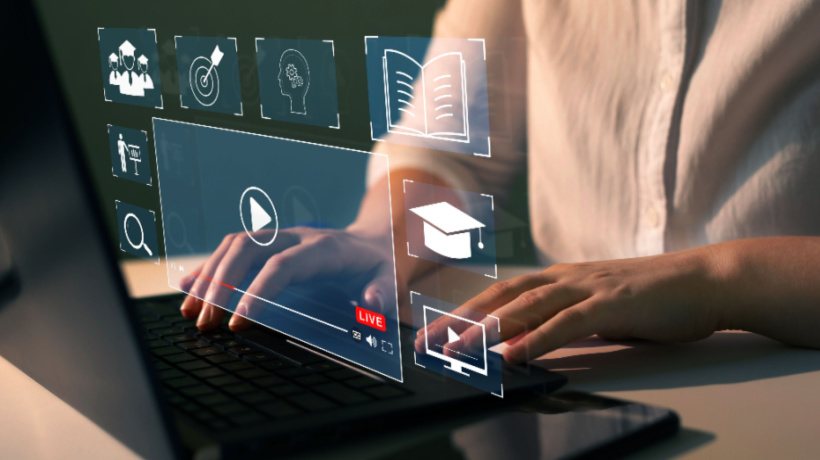Educational Videos For eLearning Platforms
One of the most significant changes that the digital age has brought about is in how people access education. Being in a traditional classroom is not compulsory anymore; more and more, we see people taking online courses, sitting for their exams through a virtual platform, and even defending graduate theses via videoconferencing. However you look at it, eLearning platforms have become a vital aspect of the online teaching and learning experience. And thanks to educational videos—like educational explainer videos or whiteboard animations—information covering just about any topic can be quickly delivered and digested at the student's convenience.
That said, not all videos are created equal. You need to understand the elements that make these videos work to get the most out of them. So, if you’re an educator looking for innovative techniques to engage your students or are considering taking a different approach to improve your online classes, keep reading! In this article, we go over five ways videos can be an invaluable tool for your virtual classroom and the benefits of using videos as part of your teaching strategies.
5 Ways Videos Can Be Invaluable To Your Teaching Strategies
1. Accuracy And Information Delivery
Educational videos are the perfect device for more precise information delivery in a shorter amount of time. By creating a script before you make your video, you can ensure that what you say will go as planned without worrying about forgetting any important detail or running out of time. Let's take a math class as an example. You can make a 15 or 20-minute video for each module, pair it up with some quizzes and additional readings, and use videoconferencing to answer any questions the students may have.
Additionally, since the information is being delivered in less time than it would in a traditional lecture and in an asynchronous way, the lesson as a whole not only turns out to be more accurate, but it also leaves more time to dedicate to other topics in the class schedule. There are no interruptions, and class debate is saved for Zoom meetings.
2. Appeal And Engagement
Videos are a much more appealing method of information delivery than the alternatives. While assigning long readings has always been the traditional means of teaching and learning outside the classroom, students don’t always have the time or inclination to follow through. This, combined with teachers from different subjects assigning different texts each week, means students rarely keep up with the material.
With videos, you're lifting a weight off your students' shoulders and delivering information through a medium they'll be much more likely to engage with. Moreover, watching a video is less tiresome than sitting for hours trying to understand a textbook chapter. Even if the topics dealt with in the video and the textbook are the same, a video can explain them in simpler terms, use visual resources to illustrate examples, and overall facilitate comprehension. Creating a video with a compelling story that your students can relate to will always be more engaging than just giving them a 50-page text full of technical terms and situations they don't understand yet.
3. Accessibility And Availability
One of the most remarkable features of educational videos lies in how the content remains accessible to all students at their convenience (as opposed to in-person classes), which can be invaluable for people trying to fit their study schedule around other responsibilities. A very common example of students who benefit from these accommodations are people who also work. Whether they have a 9–5 office job or work in shifts part-time, they still have to allocate most of their waking hours to work. And in most cases, the possibility of joining Zoom meetings is out of the question.
Going back to the math example, let’s say you choose to upload a short explainer video about solving equations, instead of having a compulsory Zoom meeting. By doing this, you’re making sure that your working students don’t fall behind with the class material and contents; since the video is available at all times of the day, students can watch it in their free time or during their work breaks.
Working students aren’t the only ones who will benefit from that explainer video; students with disabilities can have a more challenging time connecting to online meetings at specific times or simply going to class even after schools choose to go back to in-person teaching [1]. By using educational videos, the students can still learn the class contents and get through the school year with their peers.
4. Versatility, Creativity, And Flexibility
Given that the medium engages multiple senses simultaneously, the efficiency and effectiveness of videos are virtually unmatched. Not only do these videos let you use storytelling and characterization to engage students, but you also get to leverage visually compelling assets like animation to help you communicate abstract concepts that are more difficult to grasp. After all, having an animated video break down the etymology and phonetics of a word, with a narrator clearly enunciating it while the letters transform from the objects they represent will be much more memorable and compelling than just looking at the text on a chalkboard.
While time and resources will always delineate the boundaries of what you can accomplish, it's worth keeping in mind that videos are often scalable and evergreen. Meaning that while daunting at first, developing any given high-quality video is an endeavor that will keep providing reliable, desirable results for as long as the information contained within it is relevant and helpful to students!
5. Scalability And Longevity
Last but not least are the scalability and longevity properties of educational videos. In simple terms, scalability refers to the property of a certain system to handle growing amounts of work by adding resources to it. Just remember you don't have to do everything at once! You can keep building on your previous videos during the school year as you go over the class content week after week. Slowly but surely, you will be creating individual pieces that eventually become part of a cohesive set.
As for longevity, once a video is created, students can use it infinite times as long as it is available and relevant. And future students can use them too; there's no need to redo videos for the same class year after year when the educational video has already been crafted and explains the necessary concepts perfectly. In this way, as long as the contents don’t need to be updated, educational videos become a perennial resource for teachers and students alike.
Conclusion
While education methodology is always evolving and trends are constantly changing, it is safe to say that eLearning platforms and the type of educational content that comes with them are here to stay. So, while it’s up to you and your organization to gauge the best way to start, it’s also a given that educational videos are a powerful tool you can’t afford to ignore.
Luckily, after reading this, you have a more solid grasp of this powerful medium's range and potential applications (and probably have more than a few great ideas on how you can use video to improve your eLearning platform!) Now is the time to put those ideas to good use and start developing high-quality educational videos that help your students learn and your organization stand out!
References:
[1] Celebrating World Autism Awareness Month: How Does eLearning Empower Students With Disabilities?








